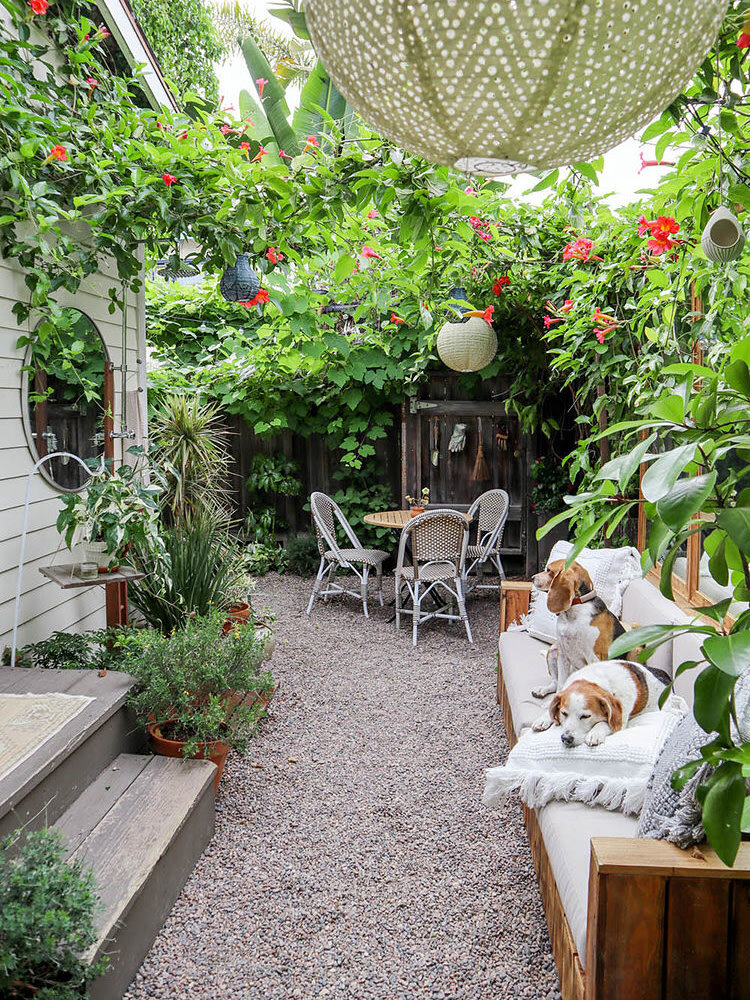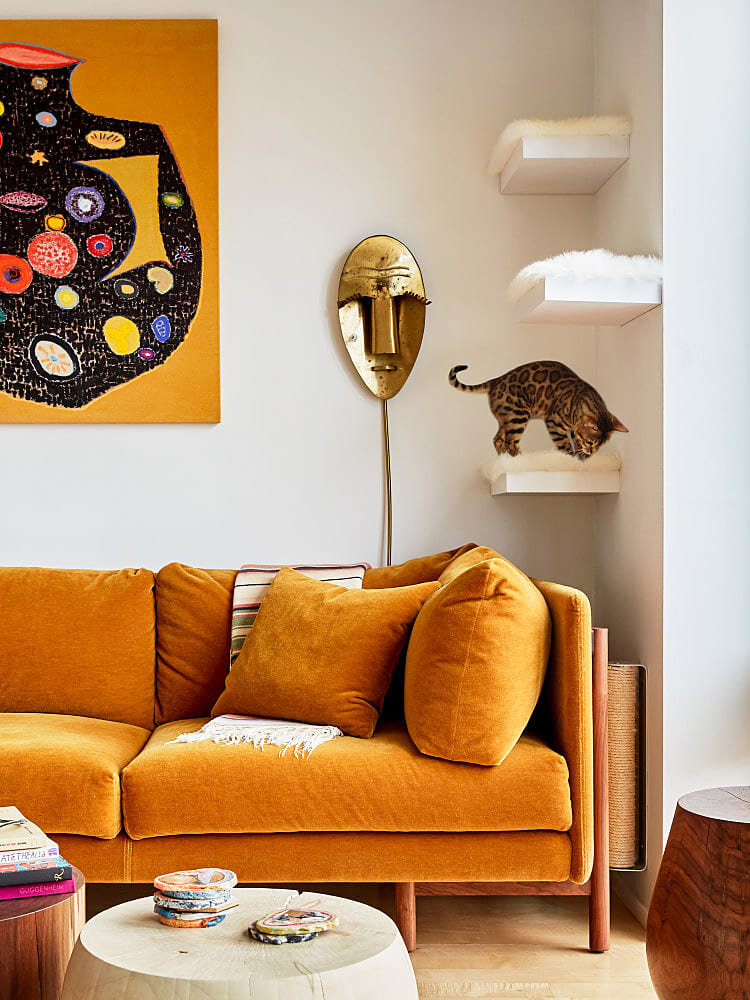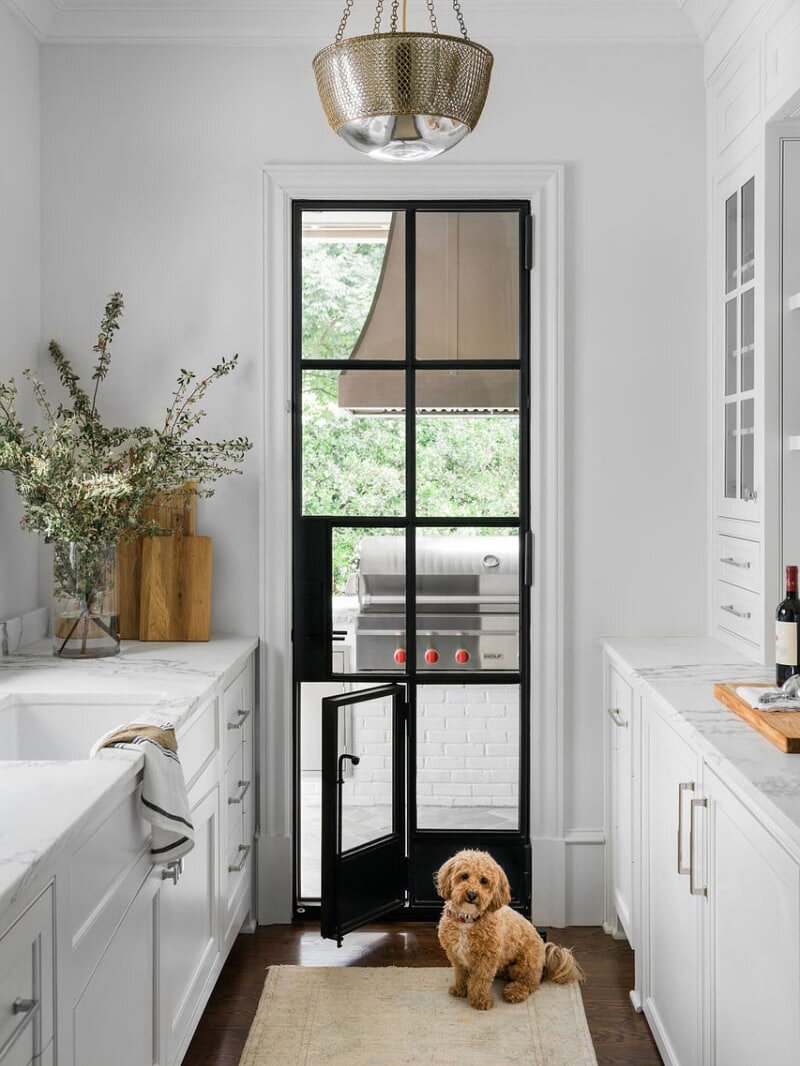Tiny bathrooms are a unique design challenge that can puzzle even the most experienced homeowner.
The goal is to make it feel stylish and comfortable rather than cramped or cluttered. The question is how to make a small bathroom look bigger without changing the dimensions of the room. Is there a way to maximize the space without compromising on your style?
Well, here are six tips to make your small bathroom look bigger while staying true to you!
1. Choose Light and Bright Paint
Colors that are light and bright make a room feel larger. A bright white bathroom will feel clean and timeless. However, if you want to stray away from neutral colors, consider staying on the lighter spectrum so the space feels airy.
If you had your heart set on a dark paint color, then be bold and go for it — just choose semi-gloss or high-gloss to reflect the light. Most homeowners utilize satin or semi-gloss paint in their bathroom, but a high-gloss finish will provide you with a shiny look that doesn’t suck out the light.
2. Layer Your Lighting
When possible, emphasize the natural light in the room. Use windows and skylights to make the room feel bright and open. Natural lighting creates the illusion of a larger space, so be keep windows clear of obstructions.
When adding artificial light to the bathroom, you should consider four types. Implement task lighting so your reflection remains shadow-free when putting on makeup or shaving. Ambient light bounces off the ceiling and is extremely flattering to your complexion. Some people may want this source of light to boost confidence, while others may find it unnecessary. Accent lighting gives dimension to a room, while decorative lighting is more for show.
To make a small bathroom look bigger, find lighting that can be multifunctional in the room. For example, mirrors with backlights are one way to gain task lighting without taking up additional wall space.
3. Focus Your Design
Your home should reflect your style, but how can you make a small bathroom look bigger without the design seeming too busy? The key is minimalism. Focus on one or two elements in the room and allow them to shine. If you try to cram too many details into a small space, the result looks overloaded.
To create a cohesive look, use the same materials throughout the bathroom. Look for similar colors to create an effortless feel. Consistency will help to make the space feel purposeful and well designed. Without a clear plan, your design could quickly be overrun in a small area.
Choose your materials with care and remain practical — a silver bathroom tray will tarnish from the moisture and air. Consider using bamboo or wicker accents that encourage positive airflow and have low heat retention.
4. Get Crafty With Storage
Storage can completely change the flow of a small bathroom. Stands take up precious floor space and give the appearance of a smaller room. Utilize hooks, wall shelves and a medicine cabinet to gain storage without losing space on the floor.
If you have an abundance of products to fit, try using baskets, boxes or containers to reduce the clutter on shelves. Clutter is known to cause anxiety because it provides a constant distraction that can feel overwhelming. Keep the mess out of sight and out of mind so you don’t need to tidy up every time guests come around.
Look for dead spaces where you could squeeze in some extra storage. The back of the door, next to the toilet and under the sink are all potential storage opportunities.
5. Create a Layout That Flows
An odd configuration can make a bathroom feel cramped and awkward. Choose a layout that creates a natural flow in the room. If possible, start by aligning all of your appliances on one side of the room — this will help create a clear line of sight and provide the illusion of more space. It will also save you money since all of the plumbing will be on one wall.
Keep the large items farthest from the door for easy accessibility and a streamlined design. You should choose products that fit the space — bulky pieces will make the room feel smaller. If practical, choose a shower and tub combo maximize the space. Install a glass enclosure to provide a sense of depth where a traditional curtain would have cut off the flow.
6. Utilize Mirrors
It’s essential to know how to update a space if you are on a small budget. Have you asked yourself how to make a bathroom look bigger without changing the paint colors, fixtures or appliances? Well, the answer is with mirrors!
Mirrors reflect light — making a room look larger and brighter. To amplify the space, choose large mirrors that will provide an elegant and unobstructed reflection. Consider making a wall of mirrors in your tiny bathroom to create the greatest effect. The idea is to make the mirrors look natural and blend into the environment.
Maximize Every Small Space
Most properties list a price per square footage, but what use is the extra space if you aren’t utilizing it? Consider applying these six tips to other areas of your home for the same appearance benefits. For additional assistance, talk to an interior designer for in-depth insight into your unique space.
Join the Renovated community!
Related Links
If there is a home that you would like more information about, if you are considering selling a property, or if you have questions about the housing market in your neighborhood, please reach out. We’re here to help.


















